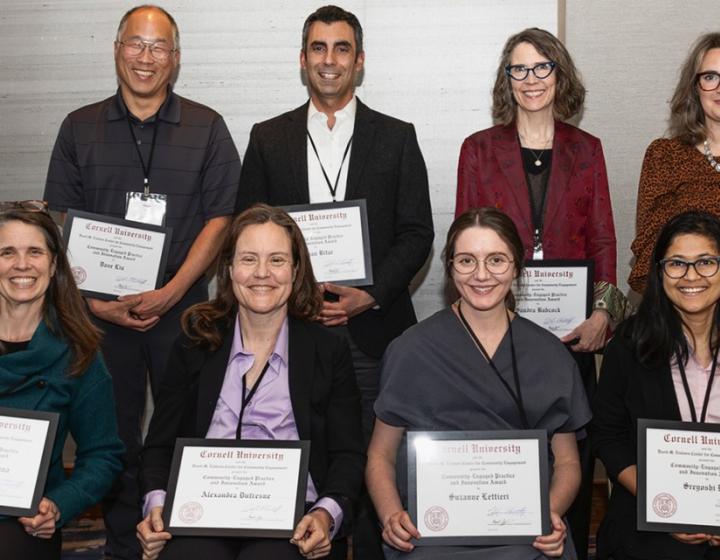Collateral damage: Manmade toxins threaten raptors

Two local raptors made unexpected recoveries this month after exposure to common and deadly manmade toxins—lead and rodenticide.
“These two cases represent extremely fortunate birds,” said Sara Childs-Sanford, chief of service at the Janet L. Swanson Wildlife Health Center. “Many, many more die in the wild without anyone knowing.”
The patients, a bald eagle and a northern harrier, were found lethargic and unable to fly, each suffering from acute poisoning from different manmade contaminants that nearly cost them their lives.
Lethal lead
A DEC officer in Onondaga County noticed the sickened bald eagle on the side of the road and brought him to the Wildlife Health Center. There, doctors discovered he was suffering from high lead levels in addition to a wing fracture. Lead is toxic to both humans and animals. It disrupts healthy organ function and can cause seizures, comas, and even death.
The poisoned bald eagle most likely ingested lead by eating an animal shot with lead ammunition. Lead can affect a victim’s mental state and movement, meaning it is possible that the eagle’s wing fracture happened after his exposure. “Even normal activities such as catching food and navigating flights and landings can be compromised by lead toxicity,” said Childs-Sanford.
In March of 2017, the federal government lifted a ban on the use of lead ammunition and fishing tackle on federal lands and waters in an effort to increase hunting, fishing, and other recreational opportunities in national parks. “Legislation regarding the use of these toxic substances by people has a major impact on the frequency and severity with which they affect wildlife,” said Childs-Sanford. “This will certainly result in a surge in lead toxicity affecting the wildlife in these vast natural areas.”

Rodenticide’s deadly reach
The adult northern harrier, also known as a marsh hawk, was found on the Syracuse University campus after a bystander saw a red-tailed hawk attack it. When it arrived at the Wildlife Health Center, doctors discovered a low red blood cell count and a poor ability to clot at the blood sampling site, leading to a diagnosis of anticoagulant rodenticide toxicity.
Northern harriers prey on small mammals, and the hawk likely caught one that had ingested rodenticide. In order for some rodenticides to be effective, pests must eat them over a period of time, increasing the number of poisoned prey for harriers.
“If we had not given him the antidote to the toxin in time, he definitely would have died,” said Childs-Sanford.

Lucky survivors
The Cornell clinicians expect both the eagle and hawk to make complete recoveries. The hawk will finish his month-long antidote course with a licensed wildlife rehabilitator, who will then release him back into the wild. The Wildlife Health Center also discharged the eagle to a rehabilitator, where he’ll stay until his wing fracture heals.
The DEC classifies both the bald eagle and northern harrier as threatened in New York state. While these birds might have a happy ending, most of the cases involving these toxins do not survive, such as the bald eagle found in Washington, D.C. last year. The rapid diagnosis and immediate treatment made them part of a fortunate minority.
“We expect to continue to see a rise in the number of cases affected by toxins in the environment,” said Childs-Sanford, “and of the small number that are found, not all of them are fortunate enough make it to a wildlife hospital for diagnosis and treatment.”

By Melanie Greaver Cordova




